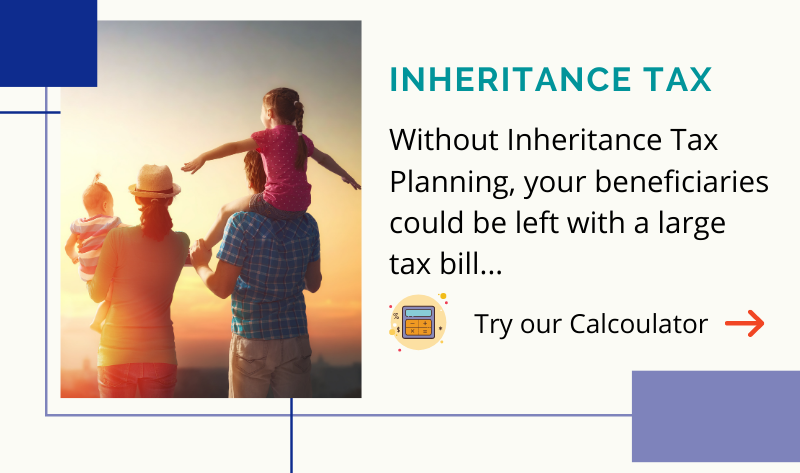
(9 Minute Read)
Key tax information to help you get planning before 5th April 2021.
Income Tax.
Personal Savings Allowance (PSA) means that the first £1,000 of interest on savings is tax free for standard rate payers.
For higher rate tax payers the allowance is £500, and for additional rate payers there is no allowance.
The Dividend Allowance means that no tax is paid on the first £2,000 of dividends. This means that higher rate taxpayers will be make savings at 32.5%, and additional rate taxpayers will make savings at 38.1%.
This makes it beneficial to declare dividends of at least £2,000 by the 5th April 2021, especially as the allowance doesn’t carry over, and is lost if not used.
If you have no other income, you can declare dividends of £14,500 and not incur any tax liability. Similarly, you can declare up to £50,000 without being a higher rate taxpayer.
Where dividends are declared in a private family company, they can be kept in a loan account and withdrawn when the funds are needed.
If an owner makes a loan to their business, then they could charge interest to make the most of this allowance.
If you are married, it may also be prudent to manage any investment portfolios between you and your spouse, to make the most of this allowance.
Inheritance Tax.
There are several ways to reduce potential Inheritance Tax (IHT) liabilities.
Any gifts made more than seven years before the date of death are Absolute Lifetime Gifts, which are outside the scope of IHT. For gifts made more than three years before the date of death, the IHT liable tapers down for every year survived, until it is nil at seven years.
When an asset is gifted it may incur a Capital Gains Tax liability. However, cash gifts will incur no such liability.
You can make annual gifts of £3,000, which are free from IHT. You can also make smaller gifts of £250 per year to as many people as you like, free from IHT.
It could be worth regularly making gifts out of excess income as they could be outside the scope of IHT, whilst reducing the size of your estate, meaning less IHT to pay on death.
Family homes worth up to £175,000 per person can be inherited by a linear descendant, without any IHT becoming payable.
Trusts are a popular tool used to reduce IHT. This is because they allow you to pass on your wealth, and transfer assets, without incurring any Capital Gains Tax liabilities.
If trusts are used, a new trust should be set up every seven years as they can reduce any IHT liabilities.
Family Investment Companies can be use to create long-term, tax efficient family investments. They can enable you to pass your wealth on, or allow the growth to be moved out of your estate, whilst retaining access to the original funds.
A large number of adults do not have a will in place, or they have a will that is outdated. It should be noted that if you marry, then your previous will is automatically null and void.

Pensions.
If you are a UK taxpayer you can get tax relief on pension contributions of up to 100% of your earnings, or £40,000 whichever is lower. This means money that would otherwise go the tax man will instead go to your pension pot.
There are also carry forward rules which mean you can contribute more. It is possible to use up any unused annual allowance from the previous three tax years tax-free.
There is a lifetime limit on pensions, which currently stands at £1,073,100. Any amount above this may result in a tax liability. If you are approaching 75 years old and your pension is over the lifetime limit it may be worth taking some out.
The rules regarding pensions and inheritance have changed in recent years. If a member of a pensions scheme dies under the age of 75, then the funds can be passed on tax-free. If a member of the scheme dies aged over 75, then the funds are taxable.
It is possible to make pension contributions for other family members if there is a family pension pot. Grandparents can contribute up to £3,600 per grandchild. These contributions could fall under the “Normal Expenditure out of Income” exception and therefore have no Inheritance tax liability.

Individual Savings Account (ISA)
ISAs can be a tax efficient way of saving, as you get a tax free savings allowance.
For 2020/21 the total ISA allowance is £20,000 per adult. The allowance doesn’t roll over into next year, and if you don’t use it you lose it.
ISAs can be flexible, and allow you to extract money and then replace them again before the year end.
The 2020/21 limit for Junior ISAs is £9,000, and can be a great way for grandparents to make annual gifts to their grandchildren whilst reducing potential Inheritance Tax liabilities.
The Junior ISA has to be opened by a parent or guardian, but once it is opened, anyone can contribute to it.
Capital Gains Tax.
There is an annual exemption from Capital Gains Tax (CGT) of £12,300. this exemption does not carry forward, so you should make use of it to reduce future tax liabilities.
Married couples will each have a CGT exemption, so assets could be transferred to utilise both of them.
Divorce.
When assets are being transferred on divorce, it is important to think about the CGT implications.
When an asset is transferred between spouses that are living together for part of the tax year it is a “no gain, no loss” transfer. This means that there is no CGT liability. This even applies in the tax year of separation.
For the years after the separation the connected party rules apply, meaning that the transfers occur at the current market value. This can result in an unwanted CGT liability, showing the importance of proper tax planning during divorce.
Principle Residence Relief (PRR) gives relief from CGT on your main residence. A married couple can only have one main residence between them, which means that only one dwelling can get PRR. This can cause a problem during divorce.
If the house has been the main residence throughout owning it, the partner moving out must transfer the property out of their name and to the person staying there in order to avoid CGT liabilities.

Property Tax.
Loan and mortgage interest costs related to residential property lettings now only provide tax relief at the basic rate of 20%.
If you are a higher rate tax payer you should think about transferring the residential property to your spouse if they are a lower rate tax payer, however this may have Stamp Duty Land Tax (SDLT) implications if there is a mortgage. To find out more about how the SDLT holiday could help, click on the link above to our tax tip on it.
If the interest restrictions apply to you, then it could be worth forming a limited company for your rental properties, as they receive full relief for interest they pay.
If you are a UK resident selling a residential property based in the UK you will need to report the sale and pay any CGT due to HMRC within 30 days of completion.
Find out about the “stamp duty holiday” HERE
Tax Efficient Investments.
Investment reliefs can provide some of the best tax breaks, and are designed to encourage investment into new and growing businesses.
The Enterprise Investment Scheme (EIS) allows up to 30% tax relief against this years tax bill, or you can carry back up to £1 million to use against the last year’s tax liability on qualifying investments. EIS can also help to defer capital gains made by investing into an EIS qualifying investment.
The EIS scheme allows for no CGT on the growth of shares within a qualifying investment, and if you make a loss you can use this against income or CGT. EIS investments are also free from IHT if you hold the investments for more than two years.
The Seed Enterprise Investment Scheme (SEIS) is similar to the EIS, but it is made to invest into smaller companies, and gives grater tax breaks to cover the increased risk involved in smaller companies.
The SEIS gives 50% relief on income tax and CGT arising from the investments. You can carry back up to £100,000 per year to use on previous income tax liabilities, and you can claim up to 50% of a CGT liability in the year an investment into the SEIS was made.
There is no CGT to pay on SEIS shares, and you can offset any losses against income tax or CGT. Like the EIS, the SEIS is IHT free when held for more than two years.
Venture Capital Trusts (VCTs) are public companies that invest in smaller companies. If you invest into a VCT and hold the shares for five years, there is no CGT on disposal, the dividends received are not taxable, and you can claim relief against your income tax of up to 30% of the investments made capped at £60,000.
Kind regards Ilyas
